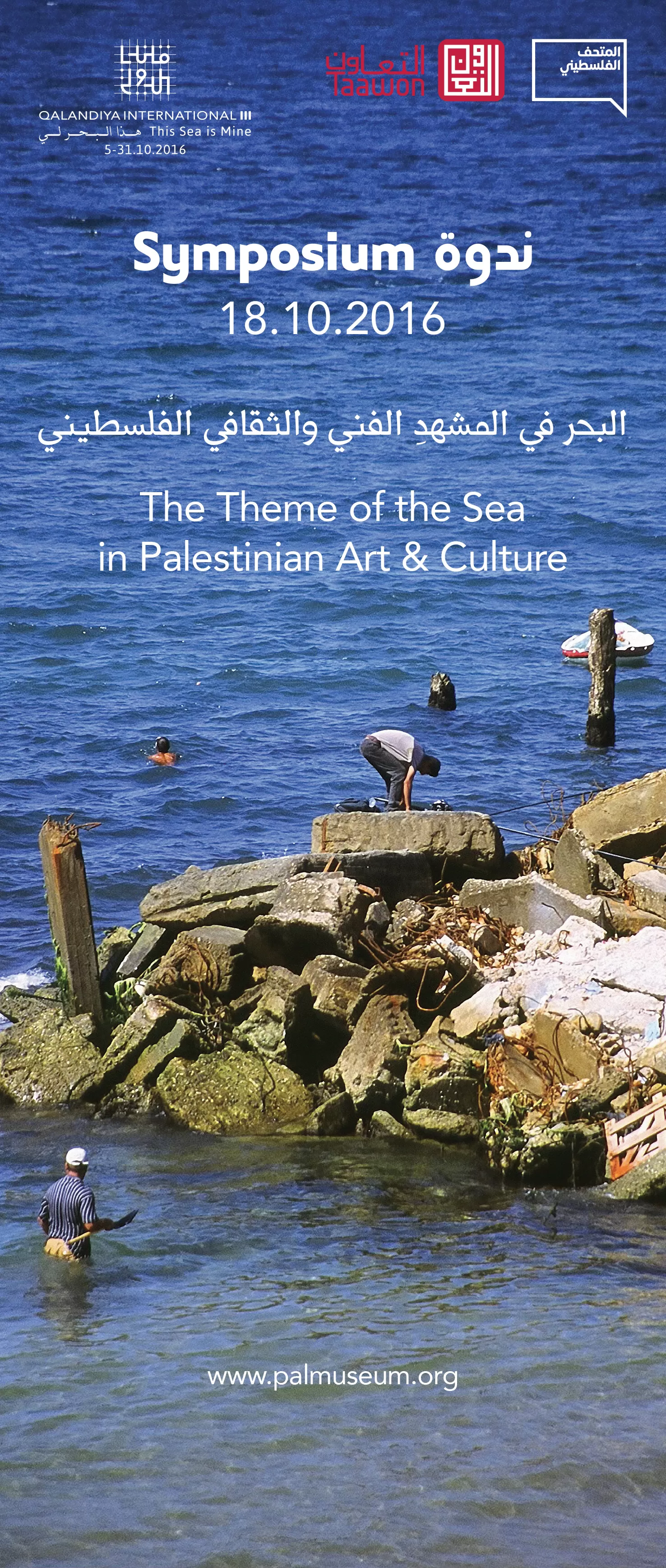
The Theme of the Sea in Palestinian Art & Culture: the Palestinian Museum Second Symposium in “Qalandiya International”
As part of “Qalandiya International”, the Palestinian museum organised in its premises in Birzeit a symposium “The Theme of the Sea in Palestinian Art & Culture”. Speakers in the session included Dr. Ibrahim Abu Hashhash, professor of modern arts at Birzeit University, Dr. Salim Tamar, Historian and researcher as well as Dr. Alaa Hourani (representing artist Khaled Hourani). The session was moderated by cultural policy researcher, Fatin Farhat.
The session opened with Khaled Hourani’s presentation on the effect of colonial power on Palestinian and on the relation of the Palestinians to the sea. It addressed the sea’s forced absence or presence – as is the case in Gaza, and how it influences the Palestinian creative production. He focused on the salient impact marked by the forced absence of the sea on the Palestinians’ cognition and cultural practices. The result was a nostalgic representation of a virtual sea, as witnessed in the clear-cut longing for the sea you don’t know in the works of Ayed Arafah “the Line of the Horizon” and “Sea Sack”. Hourani added that the Palestinian visual art scene is modestly stamped by the sea, its representations and stories. It is rather limited to the blue color and – at times – some ships, sails or fish.
In his intervention, Ibrahim Abu Hashhash described the Arab and Palestinian literature as a non-sailor, if compared to the Greek, Roman or other literatures. The Arab literary production is not deeply oriented around the sea unlike world literature similar to the Herman Melville’s novel “Moby Dick” and others. In poetry, on the other hand, the sea appears as a romantic concept, mainly in Mahmoud Darwish’s writings. He mentioned that the word sea and its semantic fields appeared over 2000 times in Darwish’s poetry.
Salim Tamari presented a paper on “Animosity with the Sea in the Palestinian Folk Culture”. He spoke of a study he conducted on Mountain against the Sea. He explained that the sea has complex presence in the Palestinian culture. He referred to the negative connotations about the sea in proverbs like “Albahr Ghaddar – The sea is a cheater”, and “may biji min algharb ily besur alqalb – The west winds do not bring joy to the heart”. He added that this connotation affected how the Palestinians dealt with the sea, including avoiding construction of villages on the eastern coast of the Mediterranean. The only exception is the Palestinian village of Al-Jorah. Tamrai also addressed the positive dimension of the sea in heritage that forms an organic positive relation, which is quite salient in the occasions celebrated by the Palestinians, including “Nabi Robin” in Jaffa and “Arabah Ayoub” to the south of Palestine.
Participants in the session included artists, scholars, students and others. The Palestinian museum will organise its third session on the Palestinian embroidery in the political history and its presence in contemporary life tomorrow Thursday from 2.30 to 5.30 at the Museum’s premises in Birzeit.
Click here to view speakers bios